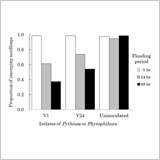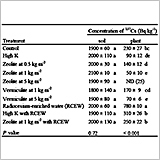Crop Physiology
Infl uence of Nitrogen Enrichment during Reproductive Growth Stage on Leaf Nitrogen Accumulation and Seed Yield in Soybean
X. Zhao, S.H. Zheng and S. Arima
- The effect of soil N availability after flowering on soybean seed yield was investigated.
- N enrichment increased the seed yield, leaf nitrogen accumulation and delayed leaf senescence.
- These results shows that N topdressing at the better timing could cause the increase in seed yield.
Abstract Full Text PDF[1069K] |
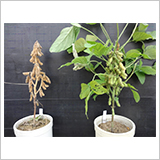 |
Field Technique and Traits to Assess Reproductive Stage Cold Tolerance in Sorghum (Sorghum bicolor (L.) Moench)
L. Krishnamurthy, E. Dinakaran, A.A. Kumar and B.V.S. Reddy
- Reproductive cold tolerance is a prerequisite for sorghum adaptation to post-rainy season.
- Panicle harvest index (PHI) and seed size were sensitive to cold and can act as selection proxies.
- Stable genetic variation existed for PHI and seed size with Dagadi solapur being the most tolerant.
Abstract Full Text PDF[758K] |
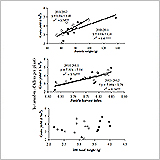 |
Genetic Resources Evaluation
Variation in Root Development Response to Flooding among 92 Soybean Lines during Early Growth Stages
S. Sakazono, T. Nagata, R. Matsuo, S. Kajihara, M. Watanabe, M. Ishimoto, S. Shimamura, K. Harada, R. Takahashi and T. Mochizuki
- To reveal the effect of flooding on root development and its genetic variation, we constructed a new capillary watering system without soil medium and raised cotyledon-stage seedlings of 92 soybean lines.
- After 7 d of flooding, dry weights and root characteristics were determined and compared between flooded and non-flooded plants.
- Our data indicate that short-term flooding of young soybean seedlings can inhibit root elongation and branching, but that flood-tolerant lines can develop roots under flooding similar to those under aerobic conditions.
Abstract Full Text PDF[1163K] |
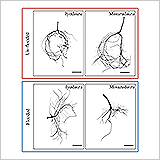 |
Agronomy & Crop Ecology
Nitrogen Uptake by the Rice Plant and Changes in the Soil Chemical Properties in the Paddy Rice Field during Yearly Application of Anaerobically-Digested Manure for Seven Years
T. Nishikawa, K. Li and T. Inamura
- In the split application plots of anaerobically digested manure, cumulative nitrogen uptake by rice plants for 7 years is significantly higher than that in the single application plots.
- Apparent nitrogen balance during the 7-year experiment is negative under low application of the digested manure, whereas positive under standard and heavy application.
- Values of plow soil pH, total nitrogen, and available nitrogen are significant among the treatments, including chemical fertilization plots.
Abstract Full Text PDF[739K] |
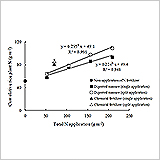 |
Lower-Than-Expected Floret Sterility of Rice under Extremely Hot Conditions in a Flood-Irrigated Field in New South Wales, Australia
T. Matsui, K. Kobayasi, H. Nakagawa, M. Yoshimoto, T. Hasegawa, R. Reinke and J. Angus
- We tried to identify mechanisms supporting rice production under extremely hot field in Australia.
- In windy > 40ºC weather, the panicle was 38ºC at the windward edge of the crop but around 35ºC inside.
- We concluded the wind with large vapor pressure deficit enables stable rice production in the field.
Abstract Full Text PDF[774K] |
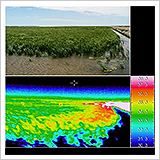 |
Fatty Acid Content of Seed at Different Development Stages in Canola on Different Soil Types with Low Organic Matter
F. Onemli
- The synthesis of oil and fatty acids were largely influenced by seed maturity and soil type.
- The seed yield and oil content significantly increased with increasing rate of soil organic matter.
- The organic matter content in soils should be ameliorated for higher yields and quality production.
Abstract Full Text PDF[613K] |
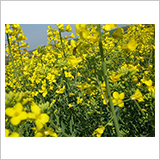 |
Effect of Winter Crop Species on Arbuscular Mycorrhizal Fungal Colonization and Subsequent Soybean Yields
K. Isobe, M. Higo, T. Kondo, N. Sato, S. Takeyama and Y. Torigoe
- The soybean growths and yields in both plots gradually decreased from the first to fourth year, but, soybean yields were higher in the wheat plot than in the rapeseed plot.
- Soybean yield was significantly correlated with the AMF colonization ratio, but not with AMF spore density.
- AMF colonization is not determined by AMF spore density alone, and other factors influence the AMF colonization in subsequent soybean plants.
Abstract Full Text PDF[1962K] |
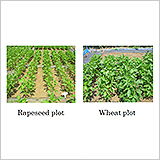 |
Maintenance of Crop Growth through 30 Days after Silking Contributes to Achieving Super-High Yield of Spring Maize
H. Tao, P. Chen, L. Li, S. Liao, L. Wang and P. Wang
- High yielding spring maize has shorter vegetative period while longer reproductive period.
- Longer reproductive period benefits to achieve greater post-silking dry matter accumulation and crop growth rate.
- High yielding spring maize needs to have a capacity to maintain a relatively high LAI not only at silking, but also until 30 days after silking.
Abstract Full Text PDF[600K] |
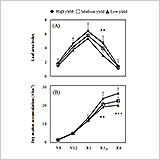 |
Assessment of Damage Caused by Two-Striped Leaf Beetle (Medythia nigrobilineata Motschulsky) Larval Feeding of Root Nodules in Soybean and Its Control during Furrow Cultivation at Seeding Time
M. Takei, M. Nakamura, Y. Hamada, A. Ikeda, S. Mitsuya, R.R. Suralta and A. Yamauchi
- This study aimed to verify damages caused by Two-Striped Leaf Beetle as a primary factor in the reduction of soybean yield and to establish a technique to control the damages.
- Ureide N content in xylem sap was decreased in plants with the damage caused by larval feeding on root nodule, and such damage caused reduction of yield.
- We established a technique to effectively control the larvae by applying insecticides to the sowing furrow at the time of seeding.
Abstract Full Text PDF[675K] |
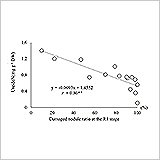 |










